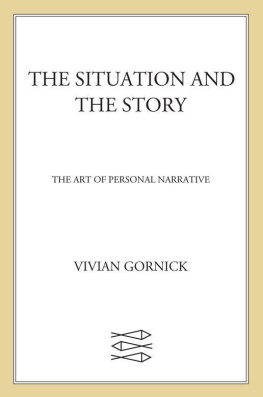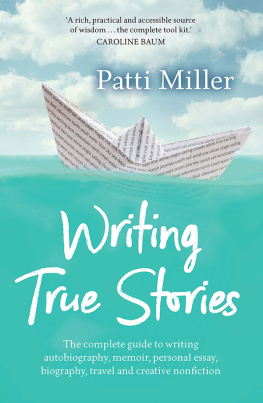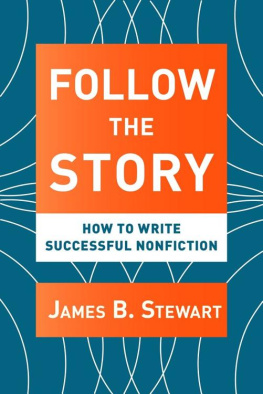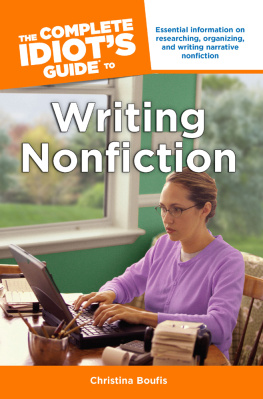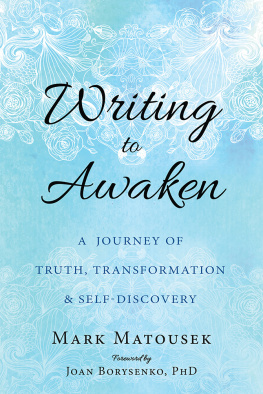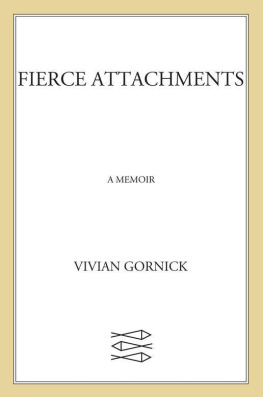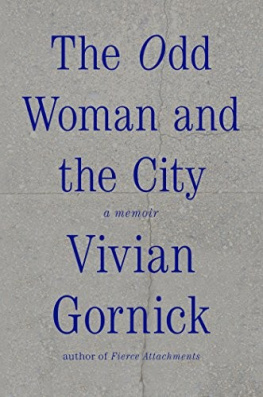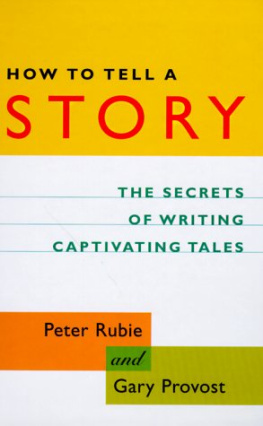The author and publisher have provided this e-book to you for your personal use only. You may not make this e-book publicly available in any way. Copyright infringement is against the law. If you believe the copy of this e-book you are reading infringes on the authors copyright, please notify the publisher at: us.macmillanusa.com/piracy.
A pioneering doctor died and a large number of people spoke at her memorial service. Repeatedly it was said by colleagues, patients, activists in health care reform that the doctor had been tough, humane, brilliant; stimulating and dominant; a stern teacher, a dynamite researcher, an astonishing listener. I sat among the silent mourners. Each speaker provoked in me a measure of thoughtfulness, sentiment, even regret, but only one among thema doctor in her forties who had been trained by the dead womanmoved me to that melancholy evocation of world-and-self that makes a single persons death feel large. The speaker had not known the dead doctor any better or more intimately than the others; nor had she anything new to add to the collective portraitwe had already been given. Yet her words had deepened the atmosphere and penetrated my heart. Why? I wondered, even as I brushed away the tears. Why had these words made a difference?
The question must have lingered in me because the next morning I awakened to find myself sitting bolt upright in bed, the eulogy standing in the air before me like a composition. That was it, I realized. It had been composed. That is what had made the difference.
The eulogist had been remembering herself as a young doctor coming under the formative influence of the older one. The memory had acted as an organizing principle that determined the structure of her remarks. Structure had imposed order. Order made the sentences more shapely. Shapeliness increased the expressiveness of the language. Expressiveness deepened association. At last, a dramatic buildup occurred, one that had layered into it the descriptive feel of a young persons apprenticeship, medical practices in a time of social change, and a divided attachment to a mentor who could bring herself only to correct, never to praise. This buildup is called texture. It was the texture that had stirred me; caused me to feel, with powerful immediacy, not only the actuality of the woman being remembered buteven more vividlythe presence of the one doing the remembering. The speakers effort to recall with exactness how things had been between herself and the dead womanher open need to make sense of a strong but vexing relationshiphad caused her to say so much that I became aware at last ofall that was not being said; that which could never be said. I felt acutely the warm, painful inadequacy of human relations. This feeling resonated in me. It was the resonance that had lingered on, exactly as it does when the last page is turned of a book that reaches the heart.
The more I thought about the achieved quality of the eulogy, the more clearly I saw how central the eulogist herself had been to its effectiveness. The speaker had composed her thoughts the better to recall the apprentice she had once been, the one formed by that strong but vexing relationship. As she spoke, we could see her in her mentors presence, sharply alive to the manner and appearance of a teacher at once profoundly intelligent and profoundly cutting. There she was, now eager, now flinching, now dug in. It was the act of imagining herself as she had once been that enriched her syntax and extended not only her images but the coherent flow of association that led directly into the task at hand.
The better the speaker imagined herself, the more vividly she brought the dead doctor to life. It was, after all, a baptism by fire that was being described. To see her ambitious young self burning to know what her mentor knew, we had to see the mentor as well: an agent of threat and promise: a figure of equal complexity. The volatility of their exchange brought us to the heart of the reminiscence. The older doctor had been as embroiled as the younger one in a struggle of will and temperament that had joined them at the hip. The story here was not either the speaker or the doctor per se; it was what happened toeach of them in the others company. The place in which they met as talented belligerents was the one the eulogist had her eye on. It was here that she had engaged. This was what had supplied her her balanced center.
It was remarkable to me how excellent were relations between this narrator and this narration. The speaker never lost sight of why she was speakingor, perhaps more important, of who was speaking. Of the various selves at her disposal (she was, after all, many peoplea daughter, a lover, a bird-watcher, a New Yorker), she knew and didnt forget that the only proper self to invoke was the one that had been apprenticed. That was the self in whom this story resided. A selfnow here was a curiositythat never lost interest in its own animated existence at the same time that it lived only to eulogize the dead doctor. This last, I thought, was crucial: the element most responsible for the striking clarity of intent the eulogy had demonstrated. Because the narrator knew who was speaking, she always knew why she was speaking.
The writing we call personal narrative is written by people who, in essence, are imagining only themselves: in relation to the subject in hand. The connection is an intimate one; in fact, it is critical. Out of the raw material of a writers own undisguised being a narrator is fashioned whose existence on the page is integral to the tale being told. This narrator becomes a persona. Its tone ofvoice, its angle of vision, the rhythm of its sentences, what it selects to observe and what to ignore are chosen to serve the subject; yet at the same time the way the narratoror the personasees things is, to the largest degree, the thing being seen.
To fashion a persona out of ones own undisguised self is no easy thing. A novel or a poem provides invented characters or speaking voices that act as surrogates for the writer. Into those surrogates will be poured all that the writer cannot address directlyinappropriate longings, defensive embarrassments, anti-social desiresbut must address to achieve felt reality. The persona in a nonfiction narrative is an unsurrogated one. Here the writer must identify openly with those very same defenses and embarrassments that the novelist or the poet is once removed from. Its like lying down on the couch in publicand while a writer may be willing to do just that, it is a strategy that most often simply doesnt work. Think of how many years on the couch it takes to speak about oneself, but without all the whining and complaining, the self-hatred and the self-justification that make the analysand a bore to all the world but the analyst. The unsurrogated narrator has the monumental task of transforming low-level self-interest into the kind of detached empathy required of a piece of writing that is to be of value to the disinterested reader.
Yet the creation of such a persona is vital in an essay or a memoir. It is the instrument of illumination. Without it there is neither subject nor story. To achieve it, the writerof memoir or essay undergoes an apprenticeship as soul-searching as any undergone by novelist or poet: the twin struggle to know not only why one is speaking but who is speaking.
The beauty of the eulogists delivery had been the clarity of her intent. Working backward, we can figure out for ourselves how hard earned that clarity must have been. Invited to speak about an experience she had lived with for more than twenty years, the eulogist must have thought, A piece of cake, the story will write itself. Then she sat down to it, and very quickly discovered herself stymied. Well, what about the experience? What exactly was it? And where was it? The experience, it seemed, was a large piece of territory. How was she to enter it? From what angle, and in what position? With what strategy, and toward what end? The eulogist is flooded with confusion. She realizes suddenly that what shes been calling experience is only raw material.

